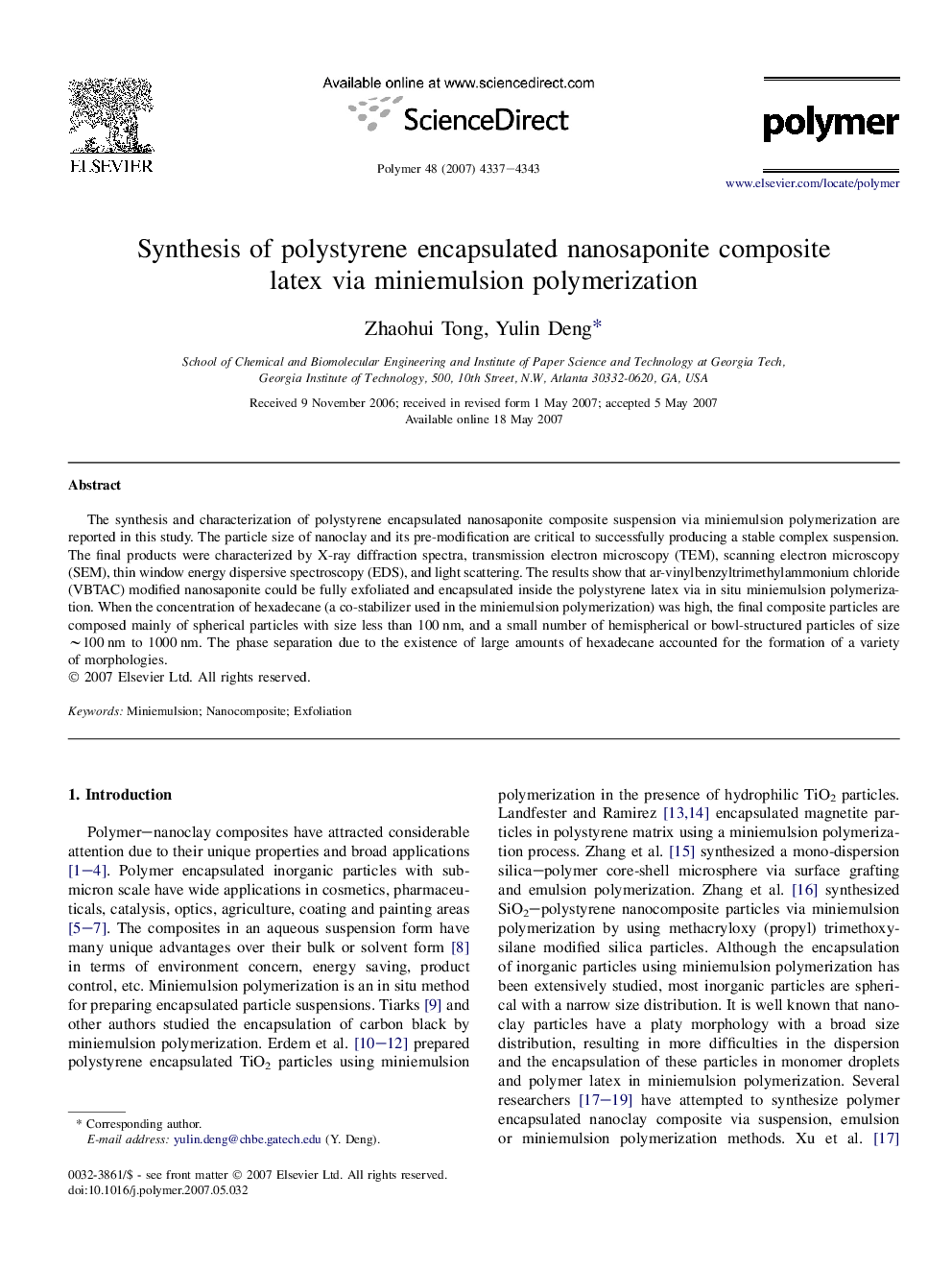| Article ID | Journal | Published Year | Pages | File Type |
|---|---|---|---|---|
| 5188641 | Polymer | 2007 | 7 Pages |
Abstract
The synthesis and characterization of polystyrene encapsulated nanosaponite composite suspension via miniemulsion polymerization are reported in this study. The particle size of nanoclay and its pre-modification are critical to successfully producing a stable complex suspension. The final products were characterized by X-ray diffraction spectra, transmission electron microscopy (TEM), scanning electron microscopy (SEM), thin window energy dispersive spectroscopy (EDS), and light scattering. The results show that ar-vinylbenzyltrimethylammonium chloride (VBTAC) modified nanosaponite could be fully exfoliated and encapsulated inside the polystyrene latex via in situ miniemulsion polymerization. When the concentration of hexadecane (a co-stabilizer used in the miniemulsion polymerization) was high, the final composite particles are composed mainly of spherical particles with size less than 100Â nm, and a small number of hemispherical or bowl-structured particles of size â¼100Â nm to 1000Â nm. The phase separation due to the existence of large amounts of hexadecane accounted for the formation of a variety of morphologies.
Keywords
Related Topics
Physical Sciences and Engineering
Chemistry
Organic Chemistry
Authors
Zhaohui Tong, Yulin Deng,
